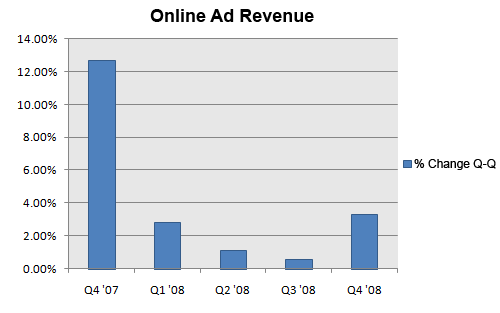His Direct, Always-on Communication Will Change What Consumers Expect From Us
Posted by Pete Snyder on 01.30.09 @ 01:54 PM
Change has come to Washington and is coming rapidly to all of America. And I'm not just talking about the fact that there is a new president with a new agenda that likely will be in stark contrast with the past administration.
I'm talking about the way the President Obama and his campaign communicates with constituents. We all know he used technology, the internet and social media to engage and motivate voters and, ultimately, win the White House. Assuming Obama does what he said he will do when it comes to social media, his administration's behavior will change the expectations of the consumer and the brand-consumer relationship.
Remember how the Clinton campaign changed the way advertising, marketing and communications operated with the notion of "The Permanent Campaign" -- always raising money, always running ads. (And suddenly no company in crisis was complete without a "war room.") More significantly, the Obama Administration brings with it the notion of "The Permanent Dialogue."
Consider: In a Pew post-election study, 51% of respondents said they expect the President and his administration to communicate with them "directly." Not through broadcast speeches to the nation. Not through the media. Not through the briefings by the White House Press Secretary. If the majority of the coalition that elected Barack Obama expects him to directly speak and consult with them, what do you think they will expect of their mobile phone service, automaker or cable/broadband provider? What will this mean for what employees and shareholders expect from CEOs? It will be awfully hard to hide behind spokespeople, exec VPs and assistants blocking calls if the president of the United States has more contact with your employees than you do.
Brands and marketers need to come to terms with the fact that we now have a president (and an administration) who understands the internet and is an active in -- dare I say a "power user" of -- technology. After all, this is the first president in history to refuse to give up his Blackberry. More importantly, we need to understand how this will impact not only the behavior of American consumers, but also how the new Communicator-in-Chief will change what they expect from all of us.
| ABOUT THE AUTHOR |
| Pete Snyder is the founder and CEO of New Media Strategies. He also is a former GOP pollster and media consultant. Full-disclosure: He voted for McCain. |
1. The battleground for both consumers and ideas is online.
What was the first action of the Obama administration? Launching a much more social-media-centric White House website, several minutes before Obama took the oath of office for the first time. Why is this relevant? It sends a clear message that the Obama administration views the internet as the "tip of the spear" -- the first (and, in some cases, primary) battleground as it seeks to push its agenda forward. As the President said: "I didn't use technology and the internet just to win a campaign, we're going to use it to change America."
2. The permanent dialogue has begun.
The president and his team aren't going to keep their database of 15 million supporters behind closed doors. Rather, they will harness these supporters into an army of spokespeople, unleashing them across social-media platforms and millions of blogs, not to mention, town halls, coffee shops and church basements. This dialogue won't be limited to politics and policy (you think its easy keeping 15 million people on topic?). The permanent dialogue will touch every industry and consumer brand. From YouTube (comments enabled, we hope) to live-streaming video via platforms like Qik, from blogs to micro-communication tools like Twitter and text messages, consumers are creating, sharing, interacting with and seeking out content about anything and everything at a staggering pace. If you aren't listening to that dialogue, you better start.
3. Consumer expectations will change.
Just as the public quickly adapted their behavior and expectations of news and the media with the rise of the 24/7 news cycle, a big shift will happen here, too. Consumers adjust and come to expect a permanent dialogue with them and their leader, don't you think they will expect the same from the other institutions (many parents now expect weekly if not daily communications from their child's teacher), corporations and brands that touch their lives? Change is here. And this means they're changing their expectations of YOU.
4. You'll need an active, authentic voice in the conversation.
You can't participate in the permanent dialogue if you don't bother to show up or speak up. When consumers search on Google or go poking around Facebook, they expect to have a fulfilling, self-driven and authentic experience. They disregard most banner ads, are impatient when pre-roll loads before a video and are annoyed when a full screen flash advertisement gets in between them and the article they want to read. This type of interruptive marketing is not how Obama communicates. Obama used conversation-based marketing and opt-in access to build lasting, trust-based relationships. Go where they are. Be real. Create an actual relationship.
Change is here and more change is coming. Not just in politics and policy, but in how consumers behave and what they expect of us. They'll demand to be closer, deeper and more direct than ever before. The question is no longer are you online, but rather, are you listening, directly available and authentically interacting. Embrace, harness and make social media work for you -- or get left behind. It's a lesson from the very top.


 The music industry and the Web industry have always had a contentious relationship. But it's hard to resist the drama of awards. This Sunday, the music world will be focused on the 51st annual
The music industry and the Web industry have always had a contentious relationship. But it's hard to resist the drama of awards. This Sunday, the music world will be focused on the 51st annual 



 What do you do when your industry is shifting under your feet? Taking the lead with radical steps is one strategy. The New York Times did just that this afternoon when it
What do you do when your industry is shifting under your feet? Taking the lead with radical steps is one strategy. The New York Times did just that this afternoon when it  Integrating a show with a social network, like
Integrating a show with a social network, like 
 At its core, Photon is the easiest way to browse through all of your photo albums on the iPhone. Thanks to the Phanfare desktop app and plugins for most of the popular desktop photo apps, you can upload all your pictures to the service. Free accounts come with 1GB of space, while
At its core, Photon is the easiest way to browse through all of your photo albums on the iPhone. Thanks to the Phanfare desktop app and plugins for most of the popular desktop photo apps, you can upload all your pictures to the service. Free accounts come with 1GB of space, while  Phanfare's desktop app is also quite well thought out, though it doesn't quite match the polish of the company's iPhone app. It does, however, present the easiest way to batch-upload your photos to Phanfare. After that, you can use
Phanfare's desktop app is also quite well thought out, though it doesn't quite match the polish of the company's iPhone app. It does, however, present the easiest way to batch-upload your photos to Phanfare. After that, you can use 
 During a talk at the New England Database Day conference at the Massachusetts Institute of Technology, Google's
During a talk at the New England Database Day conference at the Massachusetts Institute of Technology, Google's  The question that remains is whether or not Google's current search engine technology is going to be adept at doing all the different types of Deep Web indexing or if they will need to come up with something new. As of now, Google uses the
The question that remains is whether or not Google's current search engine technology is going to be adept at doing all the different types of Deep Web indexing or if they will need to come up with something new. As of now, Google uses the  The challenges facing Google today are also being addressed by their nearest competitor in search, Yahoo. In December,
The challenges facing Google today are also being addressed by their nearest competitor in search, Yahoo. In December, 